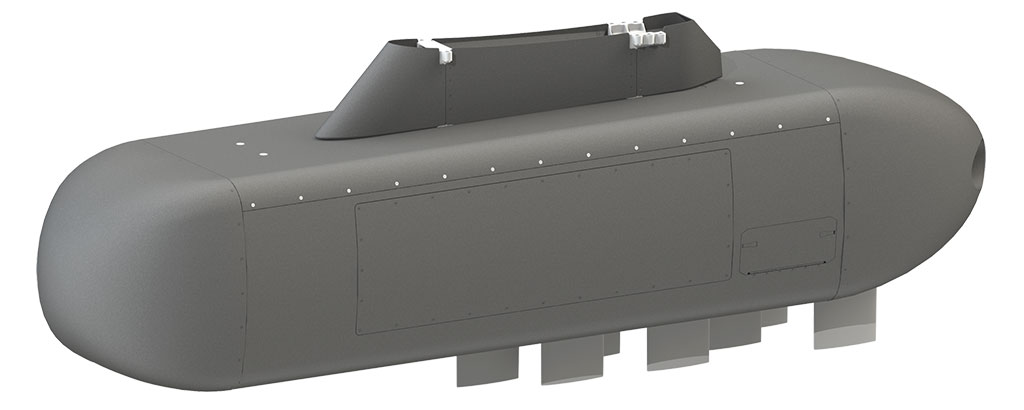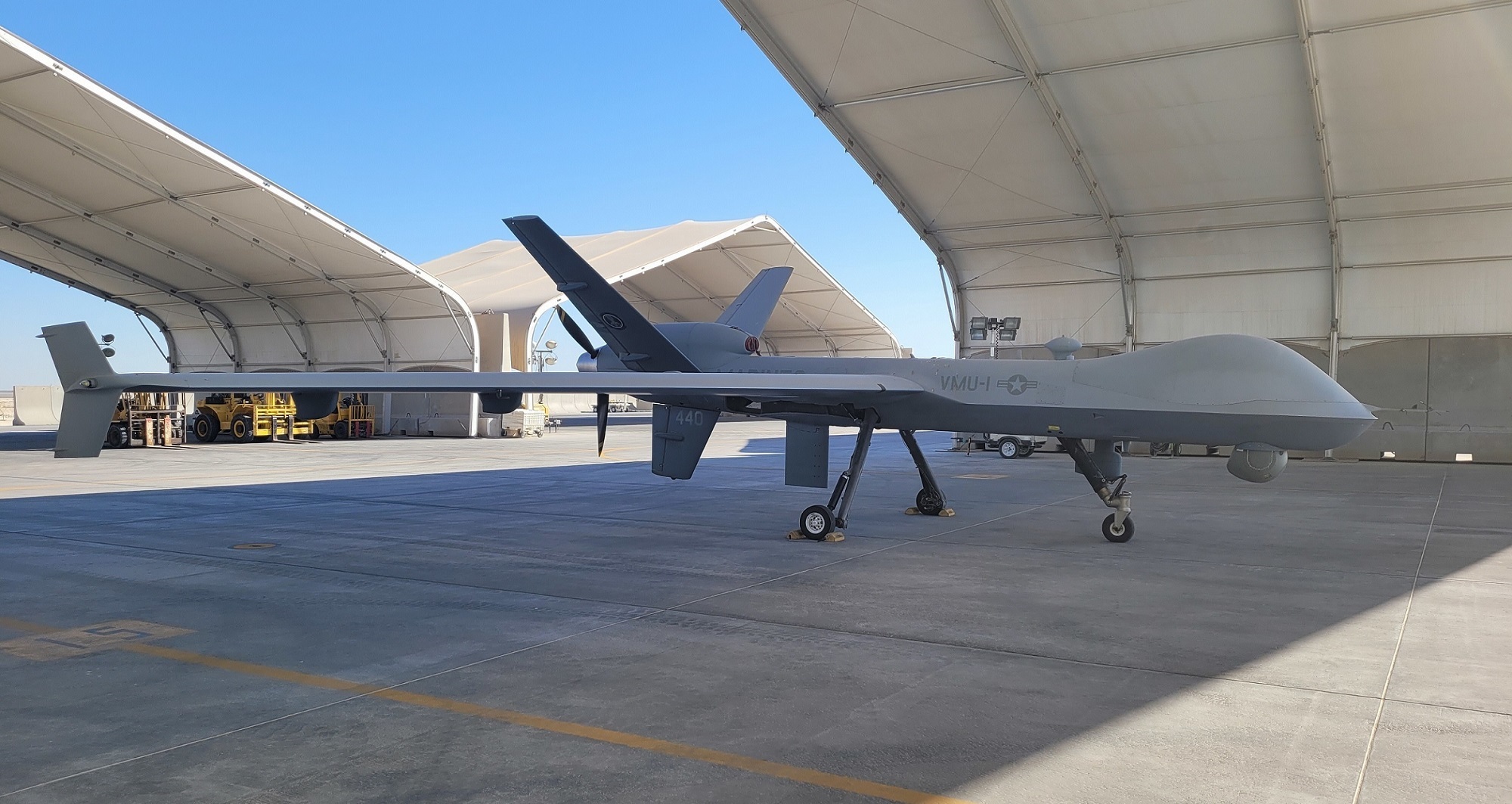Active Stealth? The pod that hides the MQ-9 Reaper drones from enemy radars
The U.S. Marine Corps (USMC) is deploying an electronic warfare pod on its MQ-9 Reaper drones that renders them nearly undetectable to enemy radar.
During an event at the Brookings Institution, General Eric M. Smith, 39th Commandant of the Marine Corps, mentioned the existence of a classified pod system, which he called T-SOAR, that allows a drone to evade enemy radar detection. This is one of the new capabilities the USMC is developing for an eventual confrontation against China in the Pacific theater.
According to General Smith, this electronic warfare pod «can mimic, I’m going to be careful, it can mimic things that are sent to it that it detects, turn them around and send them back. So it becomes a hole, it becomes a black hole. It becomes almost undetectable.»

The pod in question appears to be a derivative (and classified) version of the Scalable Open Architecture Reconnaissance -SOAR-, developed by L3Harris and General Atomics to equip MQ-9 family unmanned aerial systems with a powerful electronic intelligence system.
The SOAR pod provides long-range detection, identification and localization of radar signals and communication of interest. The SOAR allows operators of MQ-9s or other aircraft to provide standoff surveillance and communicates collected intelligence for processing. The system provides a low-cost, widely deployable, full-band signals intelligence (SIGINT) capability.

In short, the pod can detect radar and communications emissions, identify them, geolocate them and retransmit that information, at distances greater than the drone can be detected by those same emissions. But the system described by General Smith does something else, something very interesting and innovative.
The «classic» stealth
Traditionally, to reduce the transverse radar signature of an aircraft and make it more difficult to detect, a combination of various methods and techniques are used, including (but not limited to):
- Shape and Surface Design: stealth aircraft have flat surfaces and sharp angles that scatter radar waves to minimize the amount of radar energy reflected in the direction of enemy radar.
- Radar Absorbing Materials (RAM): these materials are designed to absorb radar waves rather than reflect them. They are used both in the construction of aircraft and in their coating (the famous RAM paints).
- Infrared Signature Reduction: using special materials and design techniques, the aim is to reduce exhaust emissions and engine noise, making detection by infrared sensors more difficult.
- Electronic Emissions Management: reducing own radio emissions to avoid detection is essential. For example, aircraft radars can be operated at lower powers to reduce the amount of energy they emit. This can be combined with the use of more efficient radar scanning techniques to obtain the necessary information without revealing the location of the aircraft.

Combat aircraft such as the F-117, F-35, F-22, B-2, B-21, J-20 or Su-57 (with a greater or lesser degree of success depending on the case), make use of these combined strategies to significantly reduce their detectability to enemy air defense systems, obtaining a significant tactical and strategic advantage.
In short, these are mostly passive means to disguise the aircraft (also used to a lesser extent on ships and certain missiles and various drones) and make it «smaller» to radar, drastically reducing the distance at which it can be detected.
While there are technological solutions that can be applied to reduce the radar cross section (RCS) of a «traditional» combat aircraft (such as the Have Glass paint on the F-16), the fact is that to achieve the highest levels of discretion to detection, the aircraft must be designed and built in a very specific and particular way and with very specific and particular materials. All of which has a negative impact on acquisition and maintenance costs, in addition to being a very sensitive technology, jealously guarded by its developers.
Active cancellation interference: A form of «active stealth»?
If the reports about the T-SOAR pod are accurate, it could represent a breakthrough technology that would allow non-stealthy aircraft, under certain conditions, to achieve levels of low observability similar to those of fifth-generation fighters.
Speculating a bit, one possibility is that the T-SOAR pod employs active cancellation interference techniques. In this approach, the pod would detect enemy radar signals, analyze their waveform, frequency, power, and direction (likely using artificial intelligence), and generate a replicated but inverted signal that is transmitted back to the enemy radar. When superimposed on the original signal, the replicated signal could effectively cancel the radar signal, creating a «black hole» in radar detection. In essence, it works like an electronic illusionist, creating an illusion to deceive the radar.
Active cancellation interference can be effective against a wide range of radars, including Doppler, pulse, and phased-array radars. It is also a relatively simple and inexpensive technique (compared to building a stealth fighter). And if an external pod can make a drone like the MQ-9 Reaper virtually undetectable, it means it can be easily adapted to a wide variety of platforms to counter different types of radar emissions

Of course, there is no perfect countermeasure, and the effectiveness of cancellation interference depends on the accuracy and speed with which the enemy radar signal can be detected, analyzed, and replicated. Likewise, more sophisticated radars will be able to use advanced signal processing techniques to detect and discriminate between the original signal and the replicated signal.
As technology advances and more data processing power and more insightful AI tools become available, triangulation techniques and analysis of the general electromagnetic spectrum could make it possible to find the aforementioned «black hole» within the background noise. A small, moving «no-detection» zone raises the same suspicions as an unidentified positive contact.
Cancellation interference is not a new technique, and it has been used in various military electronic systems for decades. For example, it is part of powerful electronic warfare systems to nullify or degrade the effectiveness of an enemy radar around an area to be protected, or in radars to cancel background noise and improve the detection of small targets. But the novelty that the T-SOAR pod would bring is that it would use cancellation interference offensively, imitating and manipulating radar signals to deceive enemies, who, if all goes well, should not even know they are being jammed.
In any case, let’s not forget that this is just speculation from an overtired mind, based on a tiny bit of information.

/https://aviacionlinecdn.eleco.com.ar/media/2024/07/MQ-9-Reaper-SOAR.jpg)
Para comentar, debés estar registradoPor favor, iniciá sesión